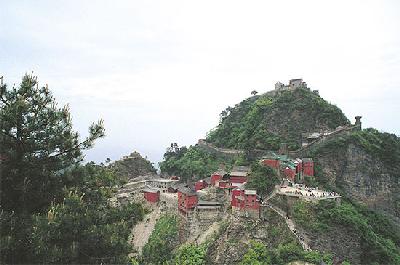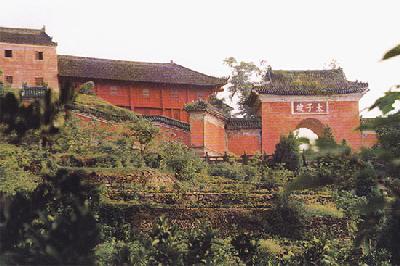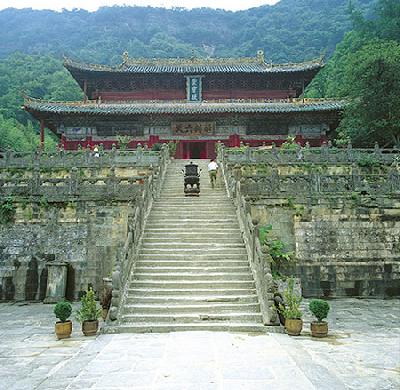| Travel in China > Natural Scenery > Scenic Mountains |
|
|
Wudang Mountain
There are four Taoist palaces, remains of two other palaces, two temples and a number of cliff temples and halls of worship remaining on Wudang Mountain. The original features of these constructions are well preserved in terms of layout, design, style, materials and technique. Taoist halls are mainly built in secluded nooks or on terraces, surrounded by nunneries and halls of worship. And cliff temples are usually built on prominent peaks, with which the mountain abounds. The temples and halls are architecturally superb, and have great cultural and technological value. They are invaluable material for the study of the politics of the early Ming Dynasty, the religious history of China and ancient Chinese buildings.
The major characteristics of ancient groups of buildings on Wudang Mountain can be summed up as follows:
1. Superb Techniques
2. Treasure House of Taoist Architecture
The Taoist buildings on the mountain were planned by emperors, and managed by imperial officials. The buildings were designed on such a grand scale, constructed with so much care, and furnished with so many lavish statues and items of worship that they are regarded as unprecedented masterpieces among China's existing Taoist constructions.
3. Historical Significance
The extensive construction on Wudang Mountain was carried out when Emperor Zhu of the Ming Dynasty was making great efforts to expand external contacts and promote Taoism in the country. He intended to consolidate his rule by instilling into his subordinates the idea that the imperial power is endowed by Heaven. Therefore, these Taoist buildings are of great significance for the study of the history and religious belief of that period.
The history of Taoism at Wudang Mountain can be traced back about 2,000 years. It began to prosper in the Tang and Song dynasties, and reached its heyday in the Ming Dynasty. Taoism witnessed a decline in the ensuing Qing Dynasty (1644-1911), but it was revitalized after the founding of New China in 1949.
Taoist ritual activities follow a set of procedures handed down through generations of Taoist priests. The priests recite ancient scriptures and play Taoist music, following a centuries-old formula. Taoist music has been extensively studied by scholars and experts.
Wudang Mountain wushu, noted for its exercise of the internal organs and breathing techniques, developed along with Wudang Mountain Taoism. Taoist priests put equal emphasis on religious practice and promotion of the health. They derived the principles of wushu from Taoist theories and applied Taoist practical approaches to wushu skills, thus gradually developing Wudang Mountain wushu which integrates ancient Chinese philosophy with extraordinary wushu skills. In the Ming Dynasty, Wudang Mountain wushu reached its height through the outstanding efforts of a Taoist priest named Zhang Sanfeng, and gradually became one of the major schools of Chinese wushu. |
||||||||||
All rights reserved. Reproduction of text for non-commercial purposes is permitted provided that both the source and author are acknowledged and a notifying email is sent to us. |
||||||||||
 |



 Cultural
Heritage
Cultural
Heritage 
 Taoist Culture
Taoist Culture Wudang Mountain Wushu
Wudang Mountain Wushu